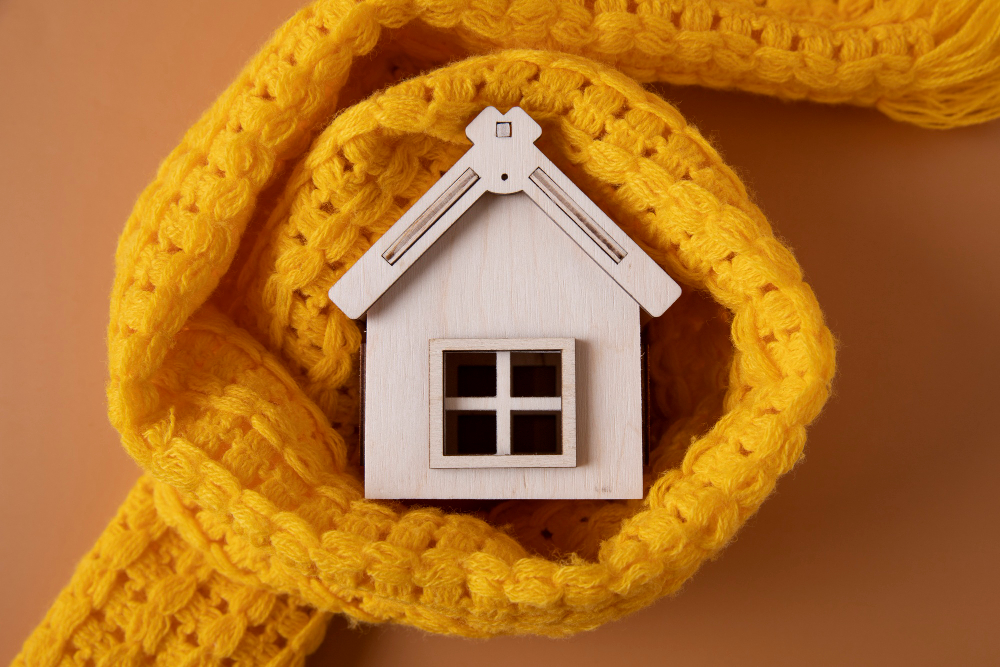Your attic may be out of sight, but it shouldn’t be out of mind. Whether the weather is scorching hot or windy and chilly, the condition of your attic has a direct impact on your home’s comfort and your energy bills. For homeowners in Southern California, where you may not normally have to plan for dramatic weather swings, ensuring your attic is in top shape is especially important.
This blog will guide you through how your attic impacts your comfort and energy bills, what to look for when you inspect it, and how to recognize when it’s time to call in an expert. Spoiler alert: with just a little attention, your attic could help you save big!
How Your Attic Impacts Your Comfort and Energy Bills
Did you know that your attic plays a major role in how efficiently your home maintains its temperature? Think of it as the buffer zone between your living space and the outdoors. If your attic isn’t properly insulated or ventilated, you’re effectively letting the weather outside dictate how your home feels inside. And that can hit your wallet hard.
The Role of Insulation
Insulation is the unsung hero of your attic. It helps regulate your home’s temperature by keeping heat where it’s supposed to be. During the summer, insulation prevents heat from infiltrating your living spaces. During colder months, it keeps the heat from escaping.
Here’s the kicker: nearly 90% of American homes are under-insulated. Without adequate insulation, your HVAC system works overtime to compensate. This increased strain drives up energy costs and reduces the lifespan of your HVAC system.
Improving your insulation is one of the quickest ways to enhance your home’s comfort and slash energy costs. Plus, it’s an environmentally friendly move that reduces your carbon footprint.
What to Check in Your Attic
A quick inspection of your attic can reveal a lot about its condition. Here’s a breakdown of the most important things to look for:
1. Insulation Levels
Start by checking the thickness and condition of your insulation. If it looks flattened, uneven, or sparse, it’s time to consider additional insulation. The recommended insulation level, or R-level, for attics, will vary by your local climate but generally falls between R-38 and R-60. To calculate the R-level of your insulation, multiply the depth of your insulation in inches by the R-value per inch. Most insulation is fiberglass batts, which has an R-value of 3.2 per inch of thickness.
Tip: If you can see the joists in your attic, you probably don’t have enough insulation.
2. Air Leaks
Air leaks might seem small, but they allow air conditioning to escape and unconditioned air to enter. Check areas around light fixtures, vents, and chimneys for leaks. Specialized caulking or spray foam can often seal these trouble spots.
3. Ventilation
Proper ventilation is crucial for maintaining a healthy attic environment. Look for vents along the soffits, ridges, and gables. Blocked vents can cause moisture buildup and overheating in the summer.
4. Moisture and Mold
Excess moisture leads to mold growth, which damages your home and poses health risks. Signs of moisture problems include water stains, visible mold, and a musty odor.
Tip: If you spot mold, reach out to a professional immediately. Mold remediation is not a DIY job.
5. Rodents or Pests
Your attic is a tempting haven for rodents, insects, and other pests. Signs of an infestation include droppings, chewed wires, and strange noises. Left unchecked, pests can cause structural damage, increase fire risks, and spread diseases. If you notice any signs of pests, take action quickly to remove them and prevent further damage.
4 Signs You Need an HVAC Professional for Insulation Issues
Sometimes, a simple DIY inspection reveals problems that require professional attention. Here are the signs that it’s time to call an HVAC expert:
1. Uneven Temperatures in Your Home
If certain rooms are always hotter or colder than others, it could indicate that your attic insulation isn’t doing its job. Poor insulation allows heat to transfer unevenly, leading to temperature inconsistencies throughout your home.
2. High Energy Bills
If your energy bills have been climbing without a clear explanation, your HVAC system may be working overtime to compensate for poor insulation. An HVAC professional can assess your attic and recommend the right type and amount of insulation to optimize energy efficiency.
3. Moisture or Mold Growth
If you’ve detected moisture or mold during your attic inspection, it’s critical to address it immediately. Proper attic insulation and ventilation go hand-in-hand to prevent humidity buildup and mold growth.
4. Aging or Damaged Insulation
Insulation doesn’t last forever. If your insulation is over 15-20 years old, or you’ve discovered signs of wear such as compression, water damage, or pest contamination, it’s time for a replacement.
Take Action with Pacific Aire Home Services
By now, you’ve learned how essential your attic is in maintaining a comfortable and energy-efficient home. But inspections and quick fixes are only part of the equation. For a thorough assessment and long-lasting improvements, calling in professionals is often the best decision.
At Pacific Aire Home Services, we specialize in transforming attics into energy-efficient spaces. From expert insulation installation to comprehensive HVAC solutions, we’re here to help Southern California homeowners enjoy the comfort they deserve without breaking the bank.
Contact us or schedule your consultation online! Our friendly and knowledgeable technicians are ready to make your home more comfortable, efficient, and safe.


